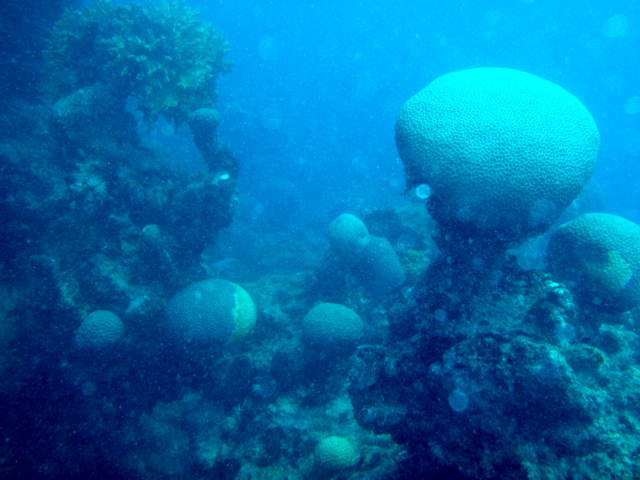
Coral reefs provide critical ecosystem services including supporting fisheries, nutrient cycling, sand production, shoreline protection, and tourism. However, many global coral species face risk of extinction in the coming century due to habitat destruction and the emergence of coral diseases. A coral colony is inhabited by a diverse microbial community including symbiotic algae, bacteria, archea and viruses, which along with the coral animal makes up what is known as the "coral holobiont". It has been hypothesized that the algal and microbial components of this holobiont may form an ecosystem within the coral that supports its health. Breakdown of the balance of this internal ecosystem may contribute to the emergence of coral disease. Through characterization of coral-associated microbial communities we are working to better understand the diveristy, dynamics, and interactions between components of the coral holobiont during periods of coral health, stress and disease. We hope that improved knowledge of the dynamics and drivers of this internal ecosystem will enable better prediction of coral response to anthropogenic stressors and enable better management of these important global resources.
Brazilian Reef Building Corals
In collaboration with Prof. Fabiano Thompson's group at the Federal University of Rio de Janeiro, we have recently carried out a study of comparative microbial community composition in the highly endemic corals of Abrolhos Bank, Brazil. These corals are experiencing accelerated rates of disease outbreaks, in particular the disease White Plague. We have used pyrosequencing to analyze the microbial community composition of 16 coral and reef water samples. This effort has enabled us to develop targeted hypotheses regarding the biological correlates of health and disease. In particular, our work shows that while microbial communities associated with corals are very diverse, healthy corals share a common set 15 distinct microbial populations. These “core” populations are not found in apparently healthy tissue adjacent to an advancing lesion of White Plague disease. In addition, we have identified a previously described agent of White Plague disease at highest abundance in coral tissue adjacent to an advancing White Plague lesion. However, in contrast to the prevailing hypothesis that infection by this pathogen causes disease, we have also found low levels of the pathogen in healthy corals. This suggests that the pathogen may be opportunistic, where its proliferation is a consequence of disease rather than its sole cause. Our current efforts focus on exploring the relationship between “core” microbes, pathogens, and the rise of disease in corals.
The specific questions that we address include:
- How are “core” microbial taxa, and the White Plague pathogen distributed across corals and water at protected and impacted reefs?
- What is the natural baseline of microbial activity in healthy corals?
- How does microbial activity change in coral tissues adjacent to advancing lesions of White Plague disease?
- Is microbial activity forced by external drivers, such as environmental pollution?
Answers to these questions will shed light on the activities of microbial populations associated with corals and their role in mediating the balance between health and disease.
